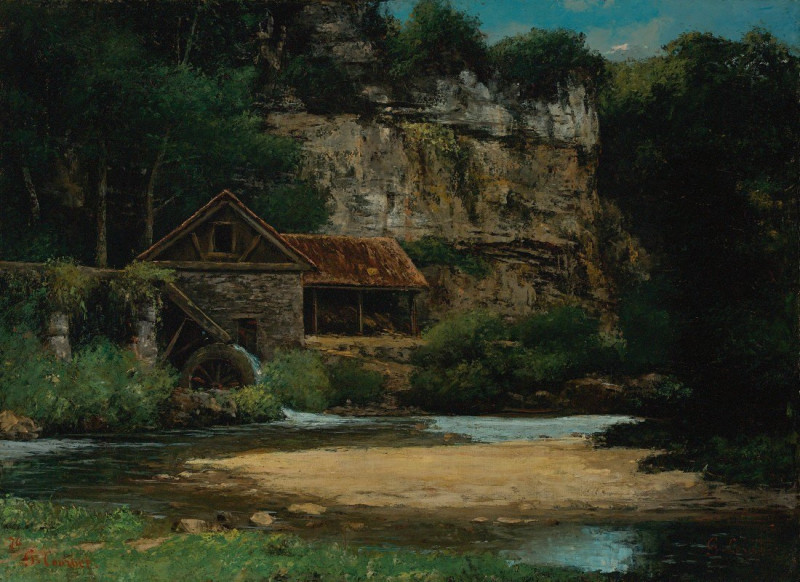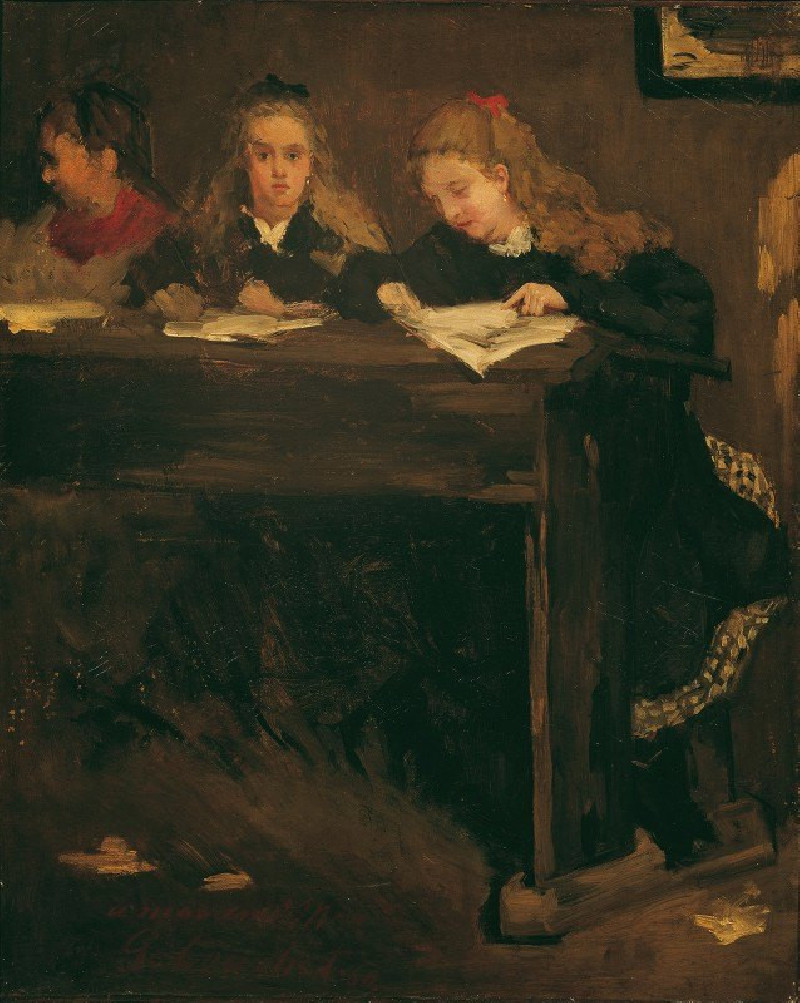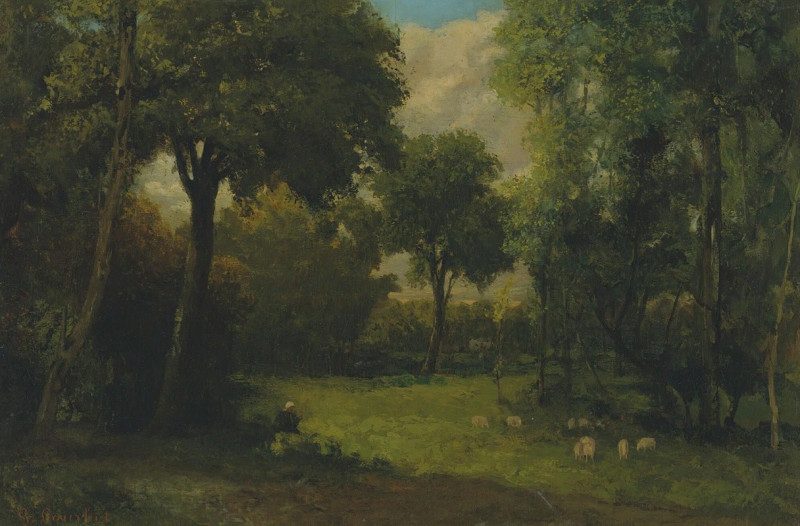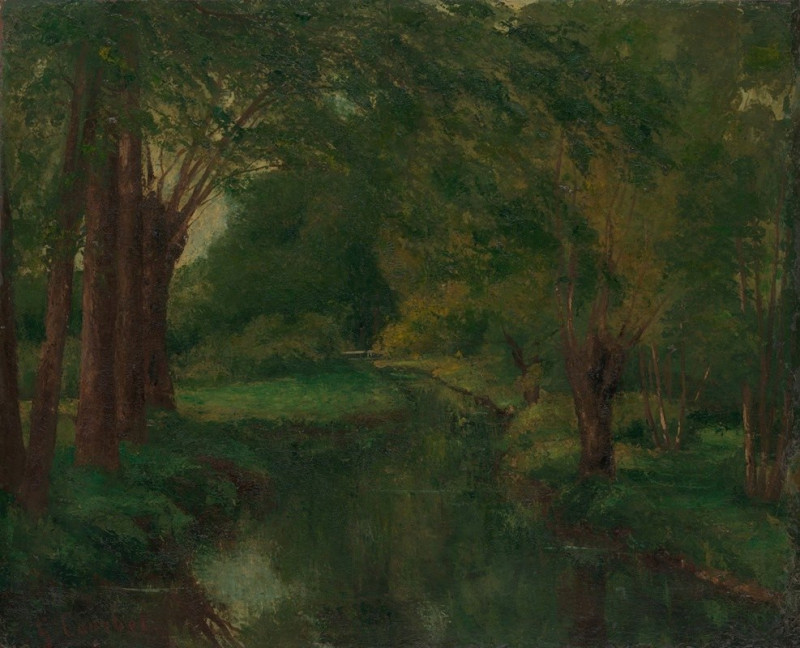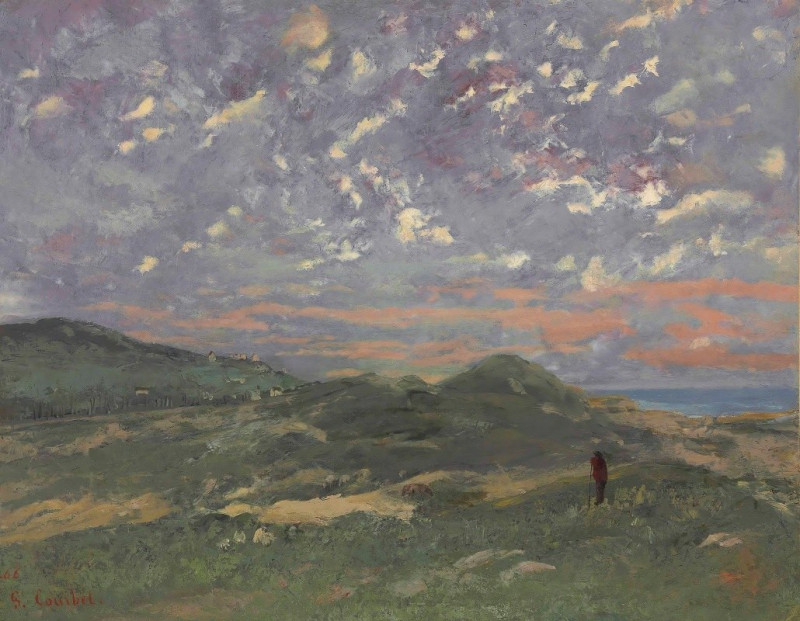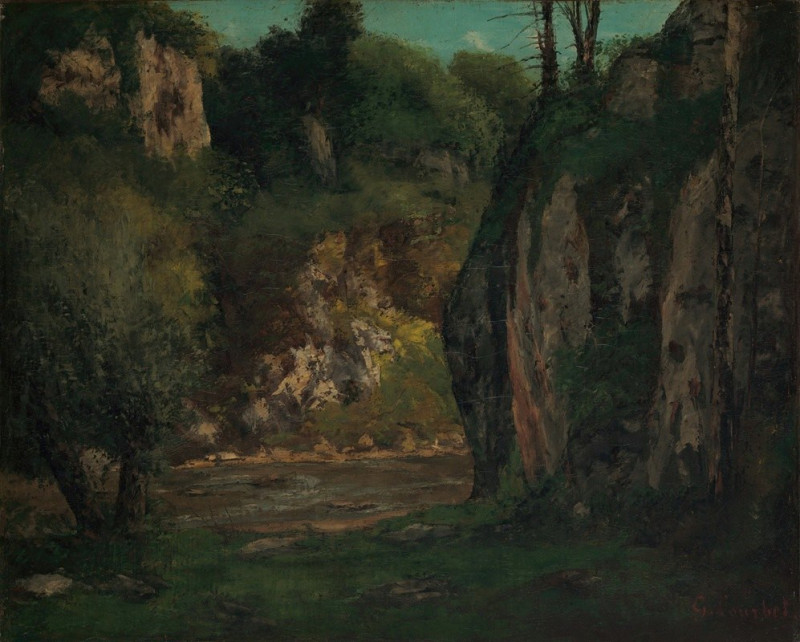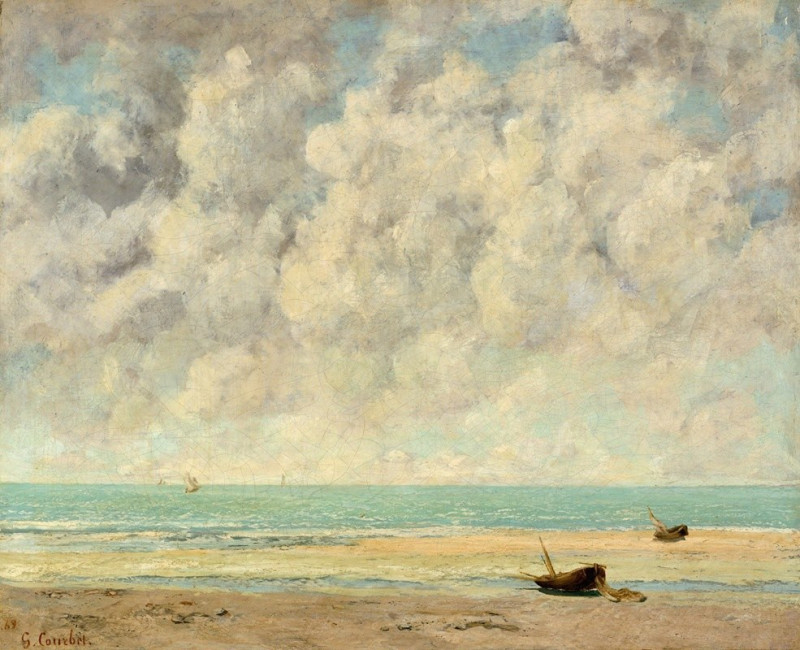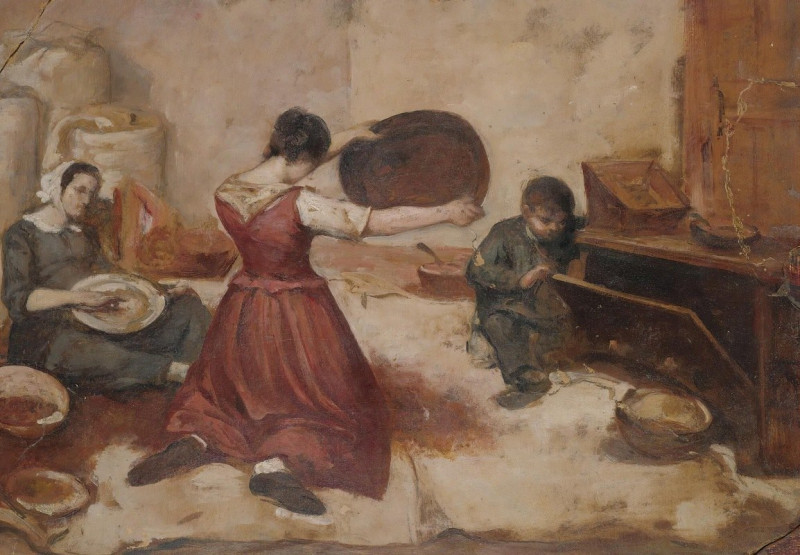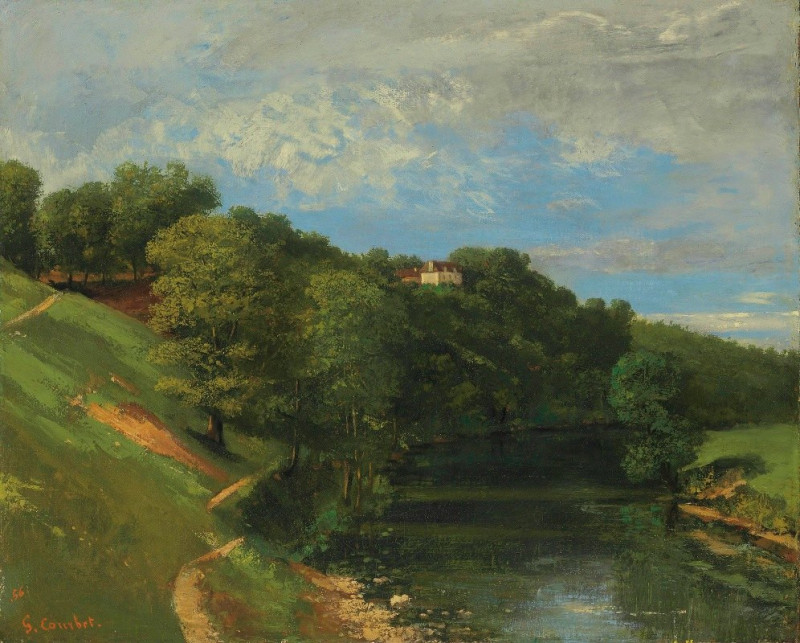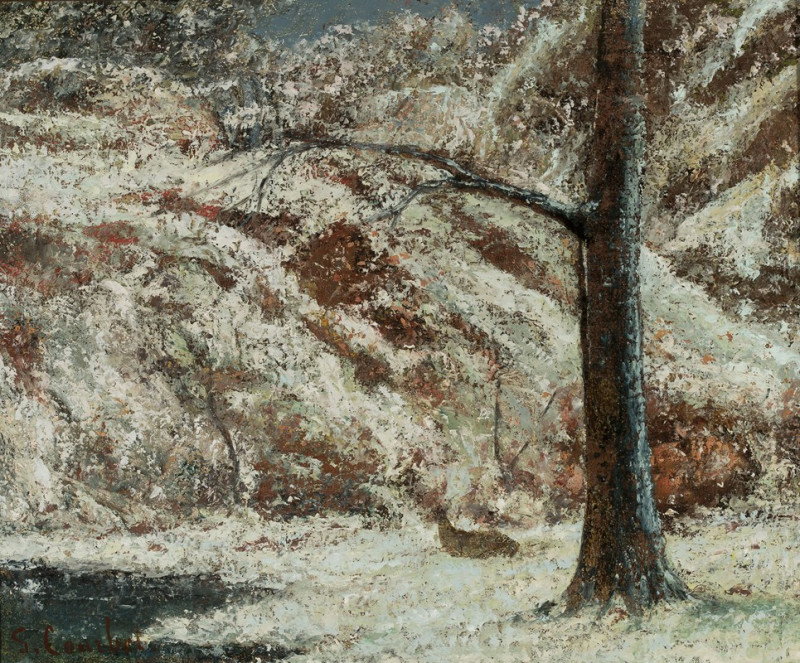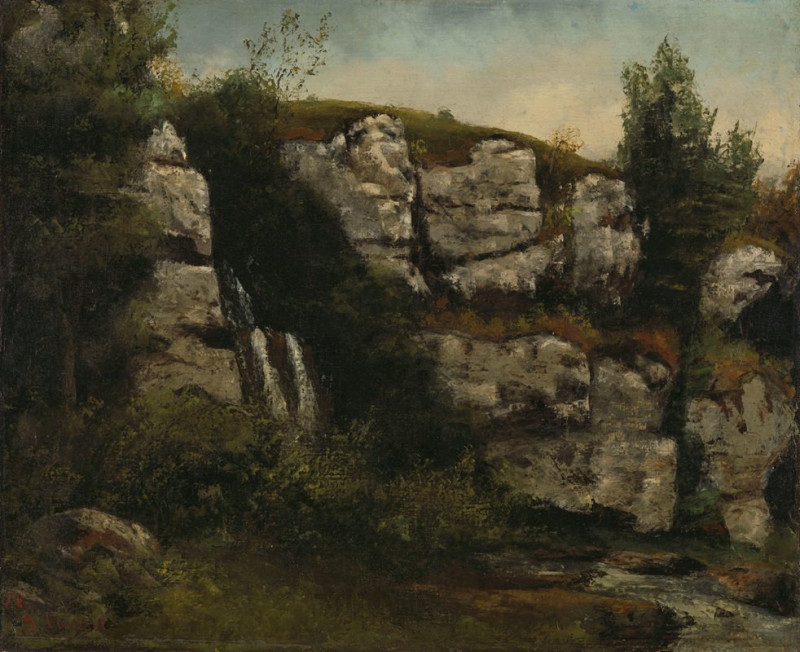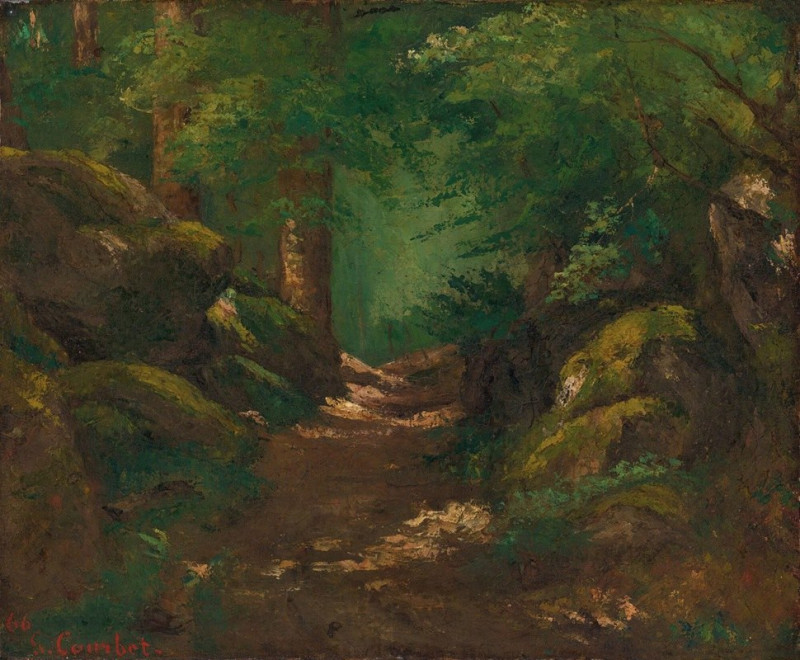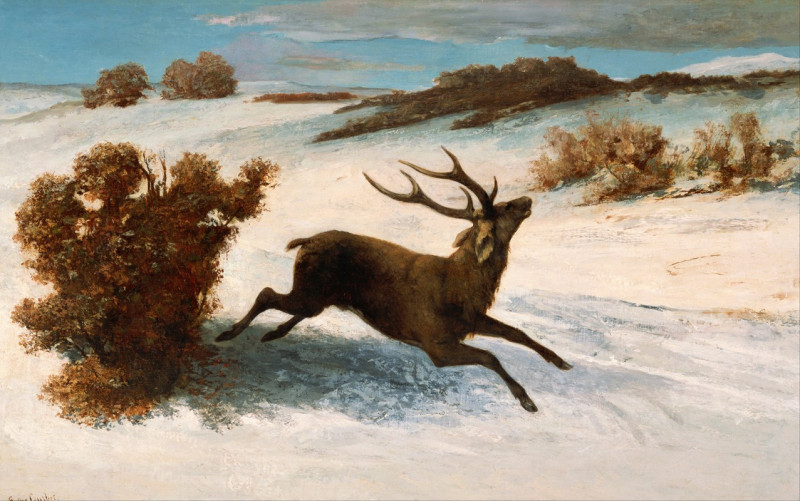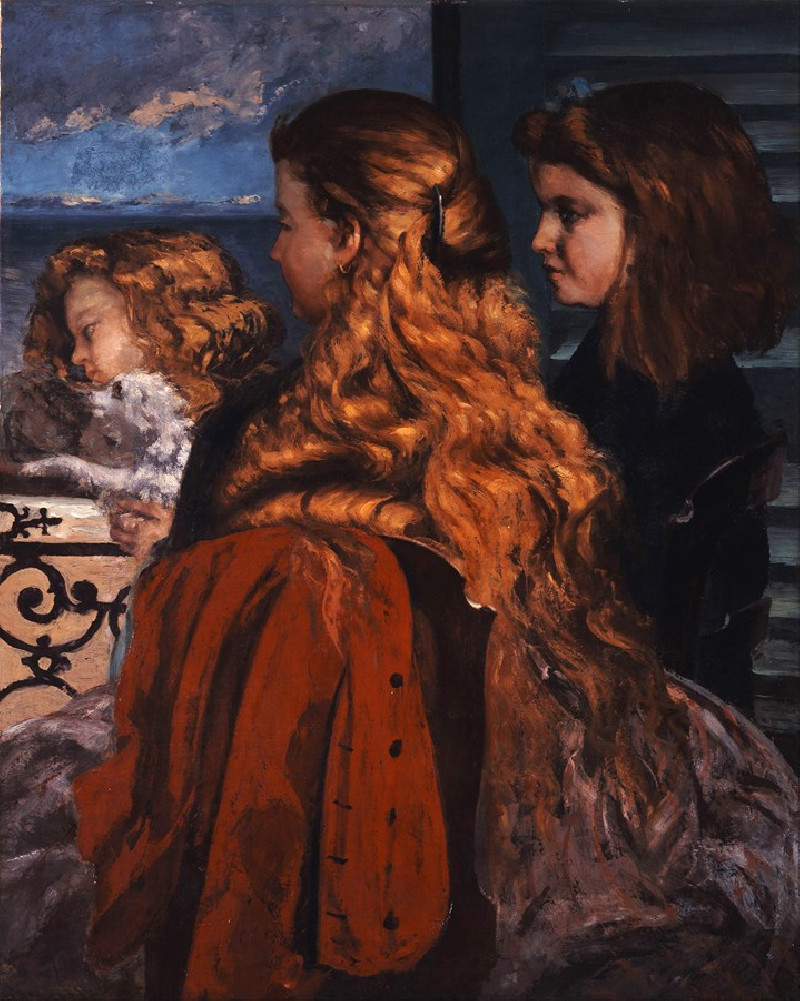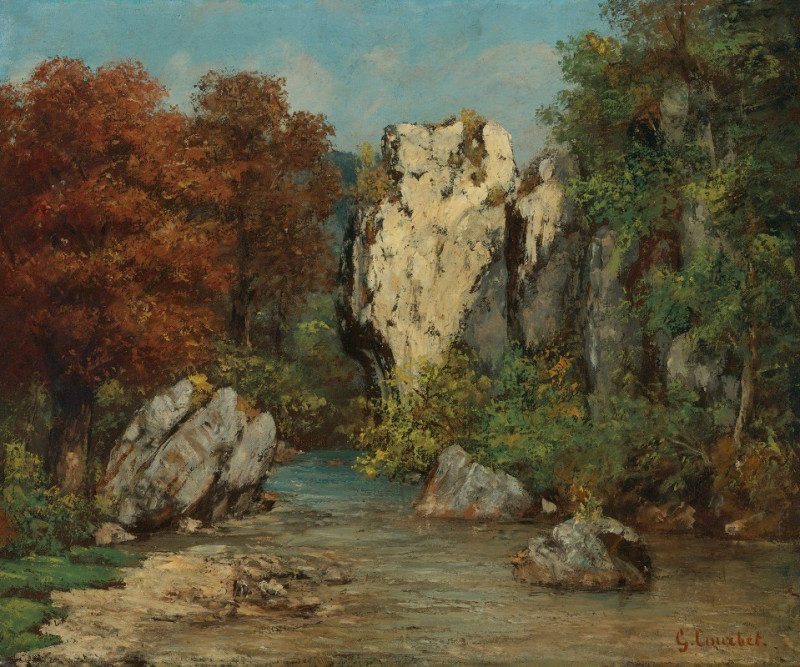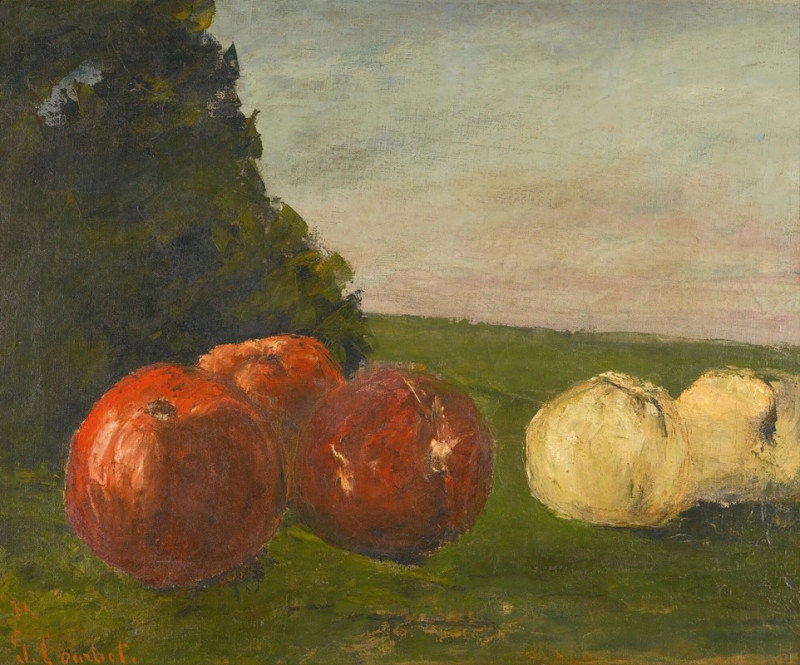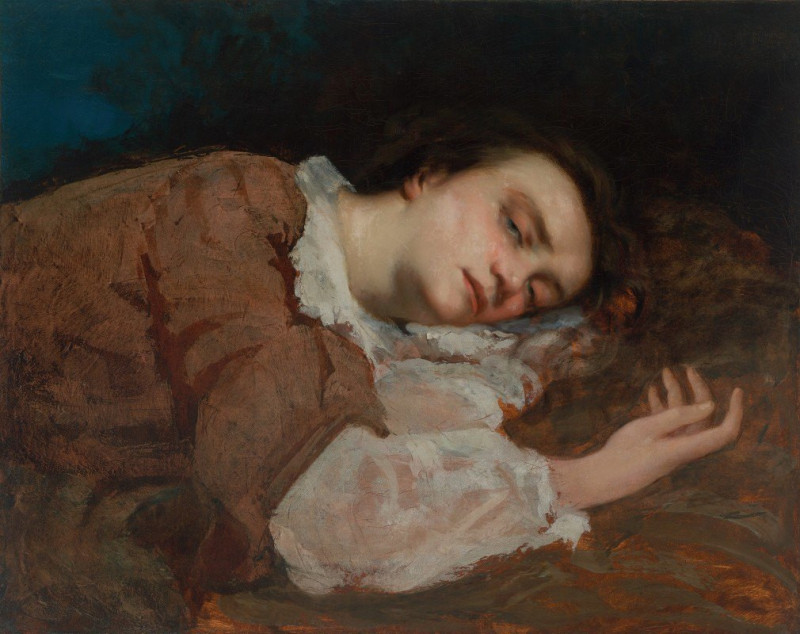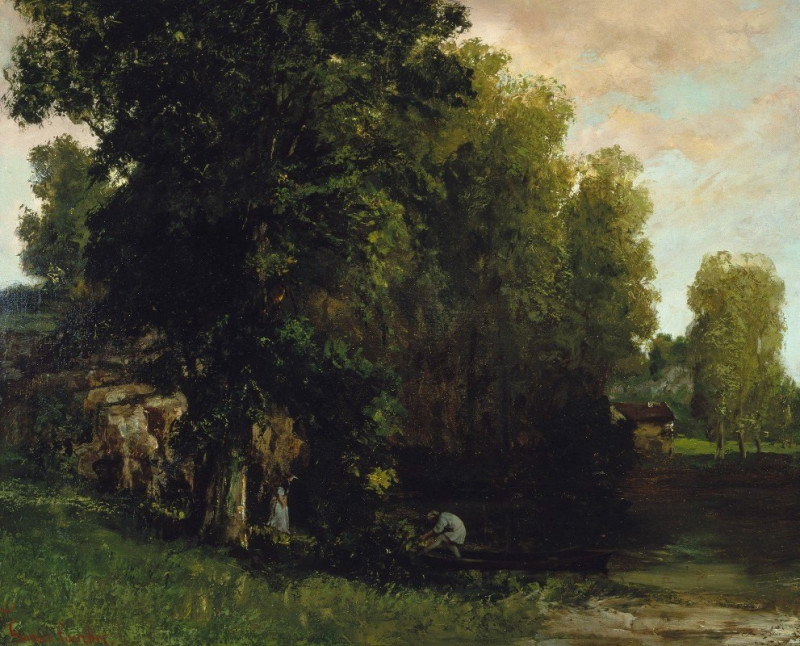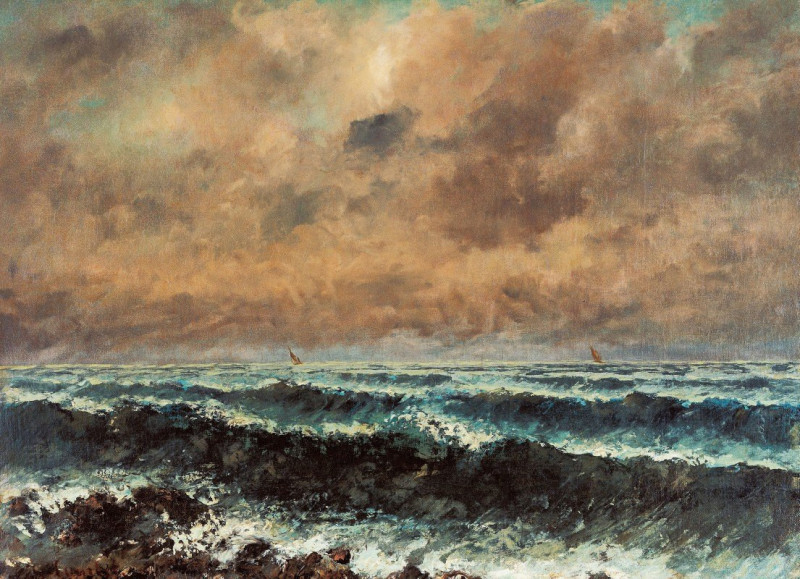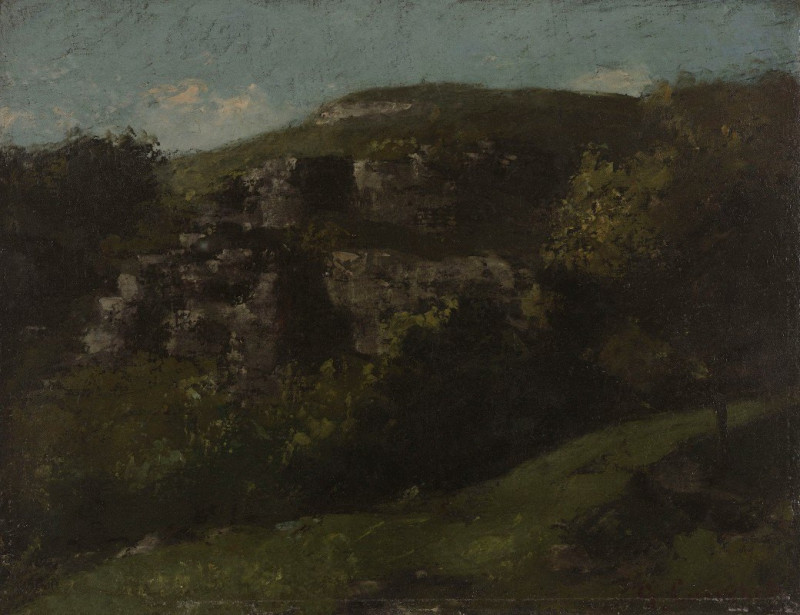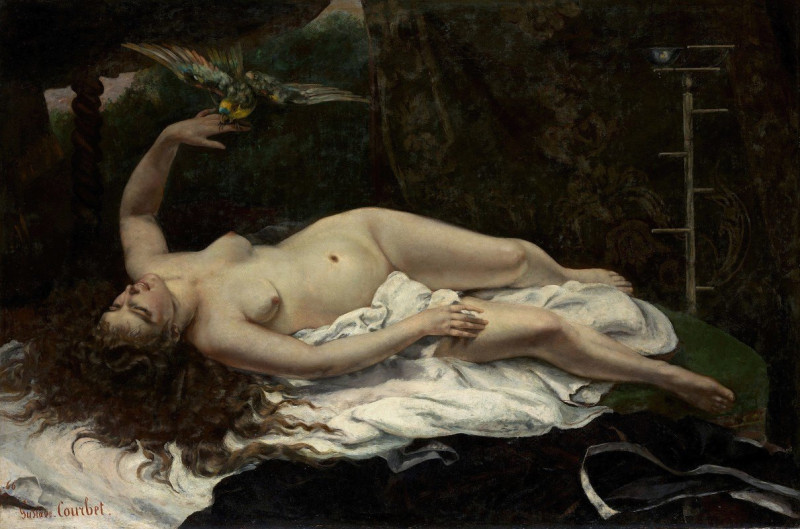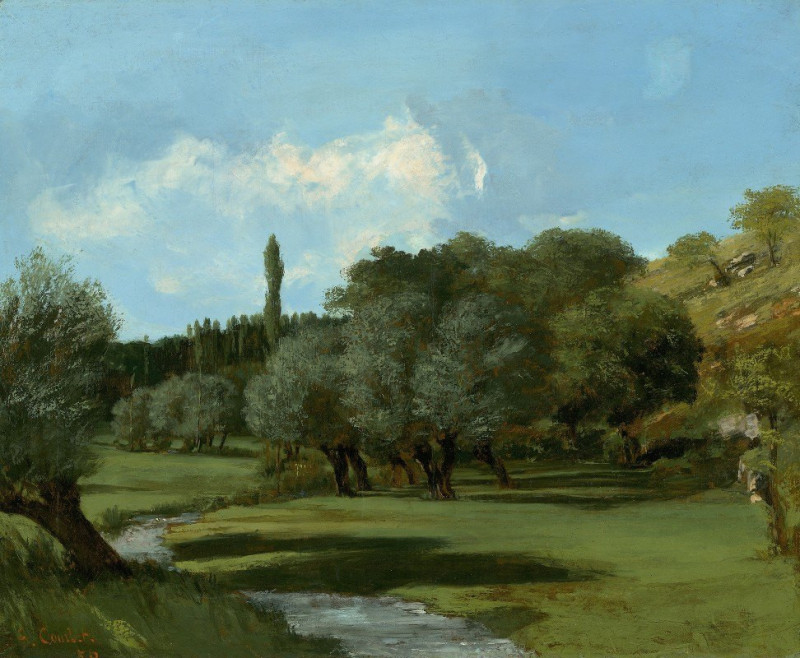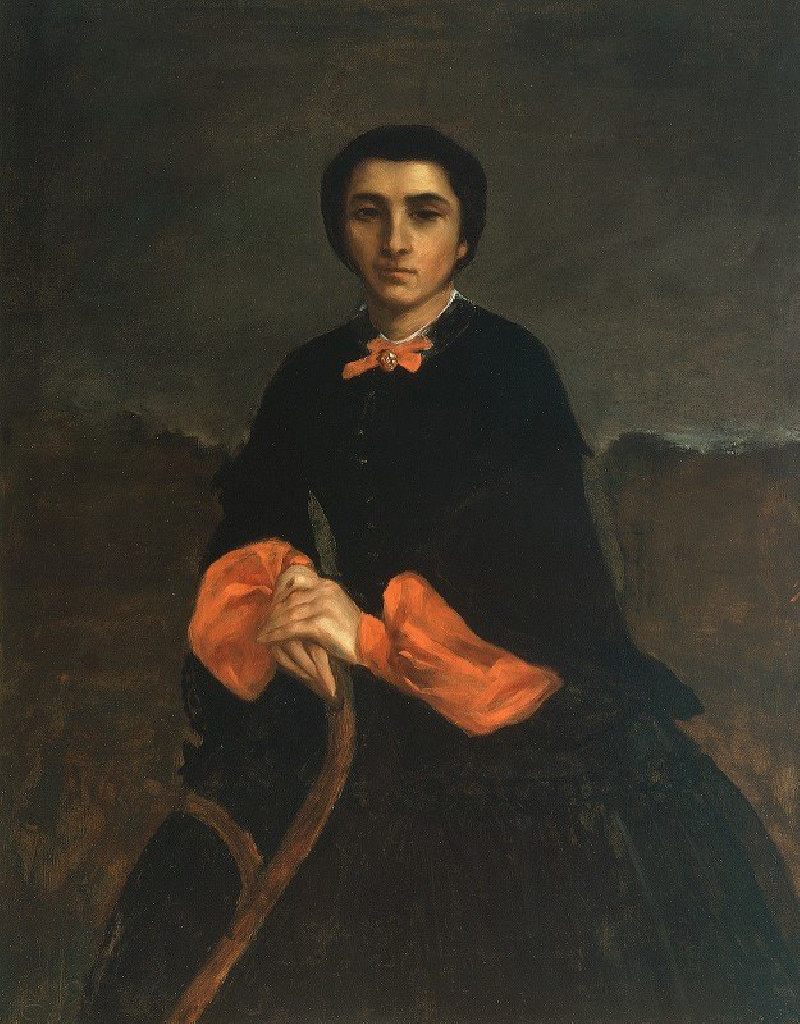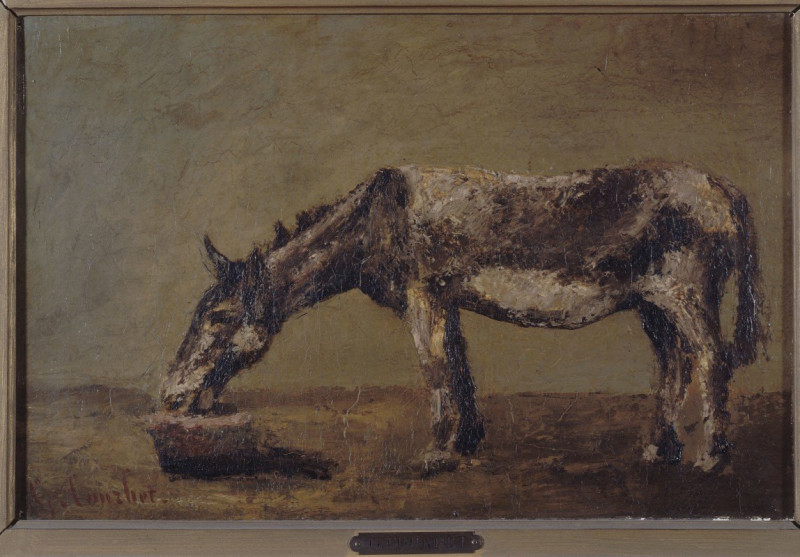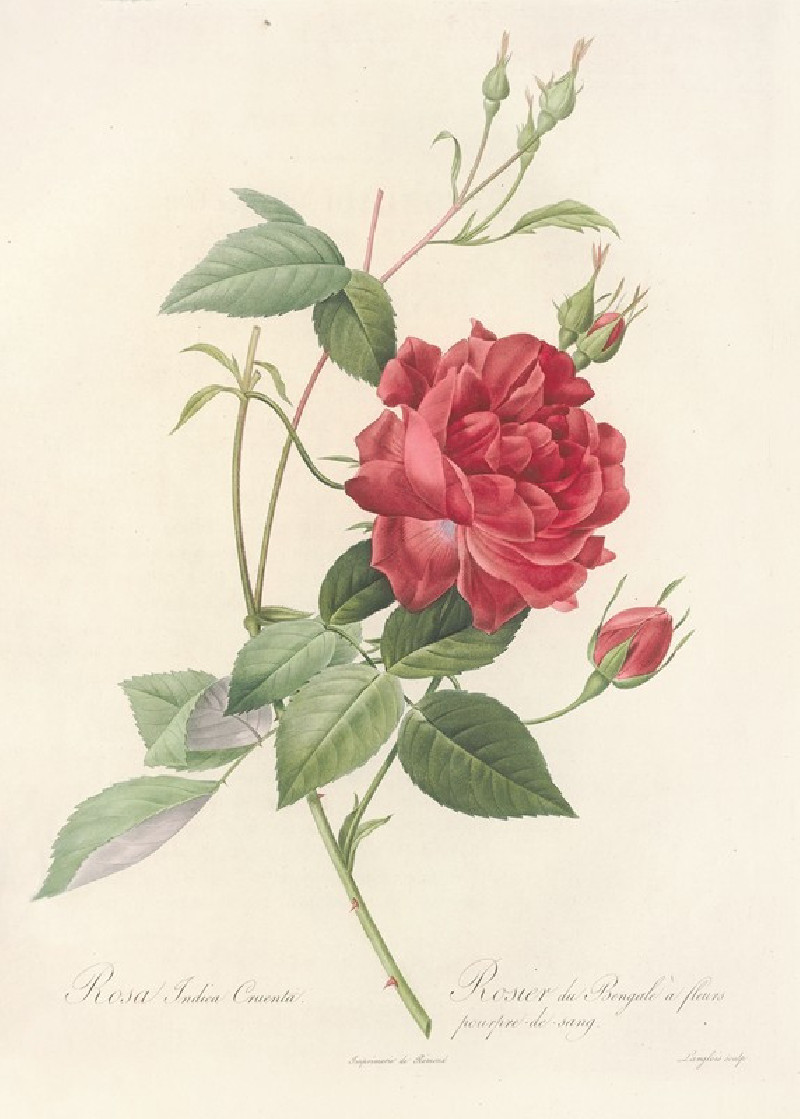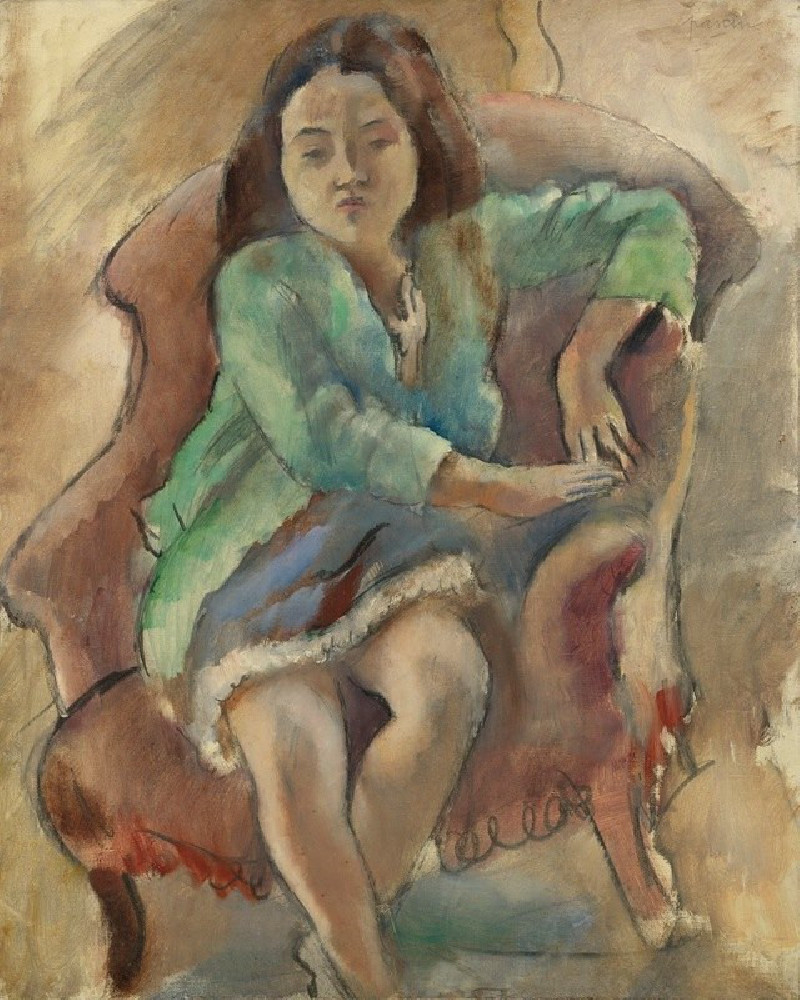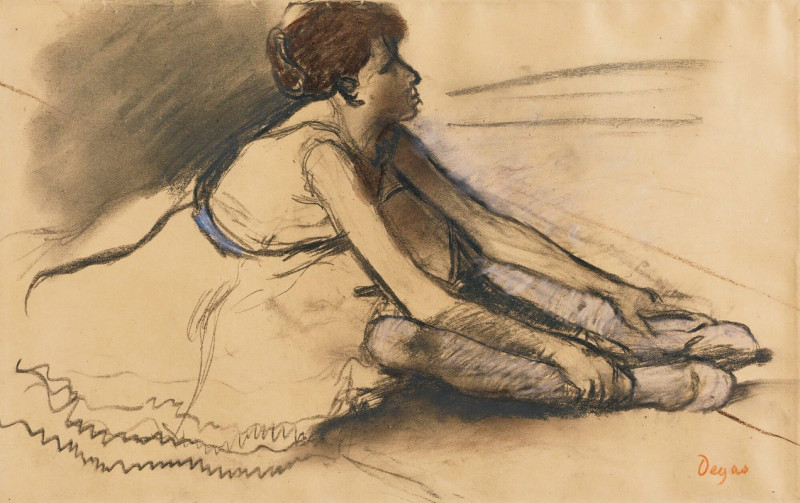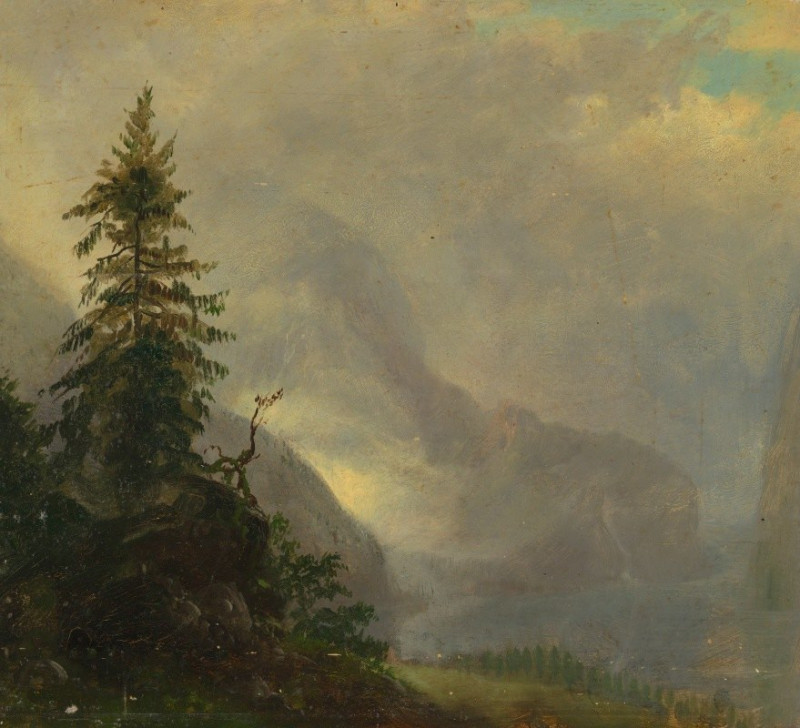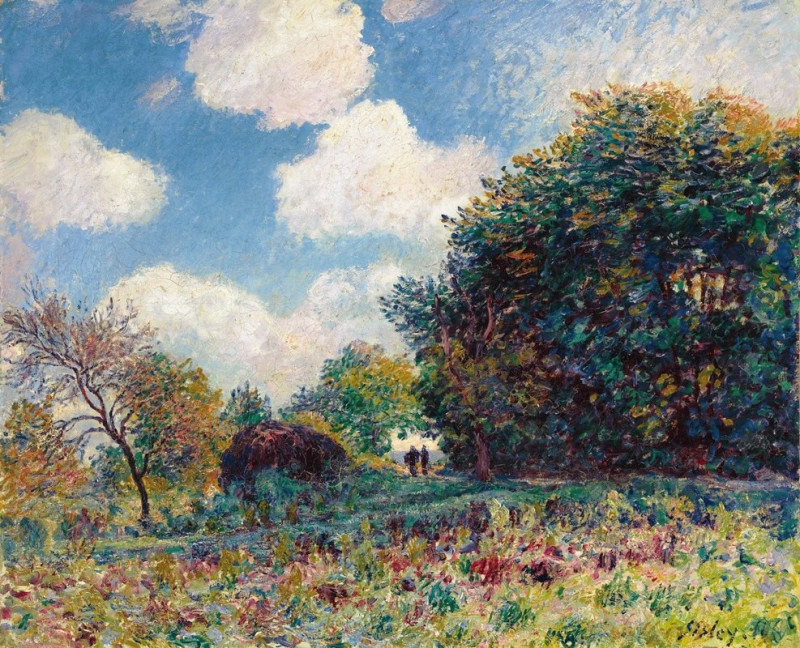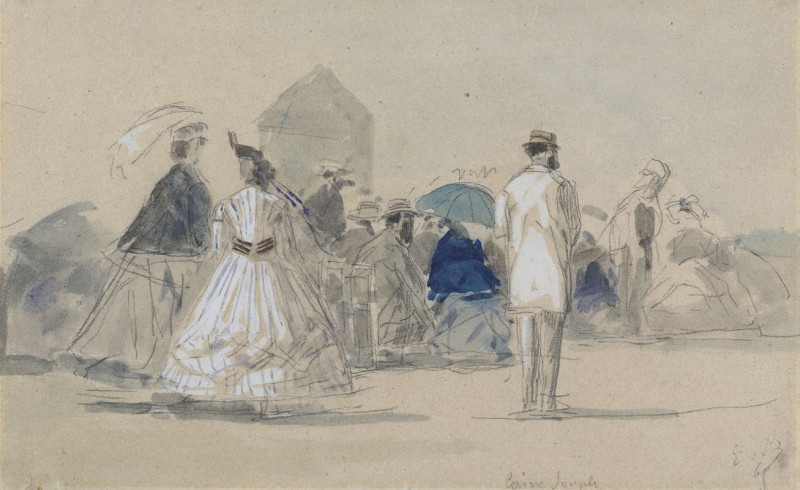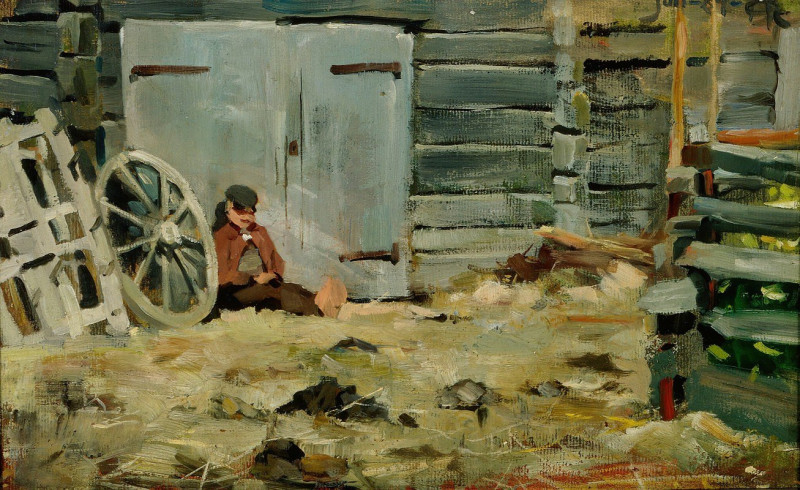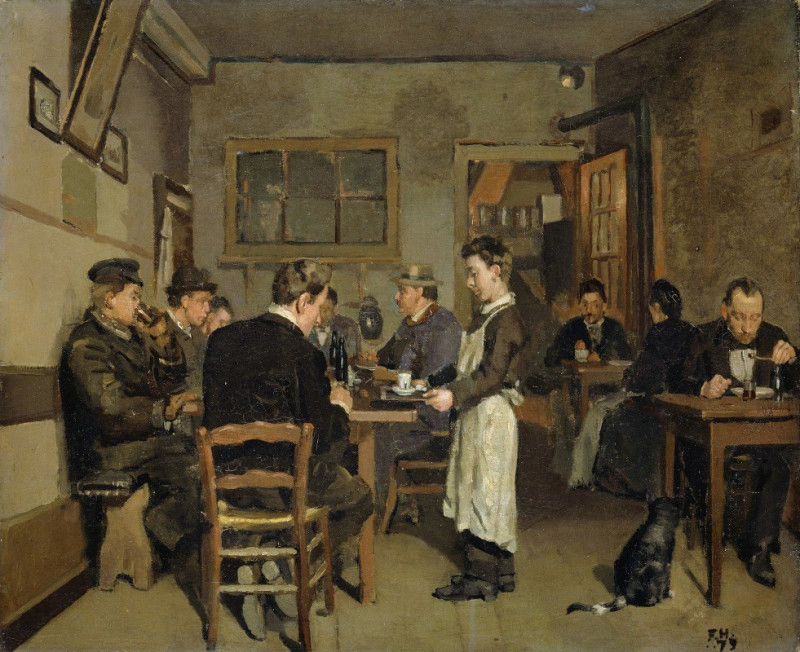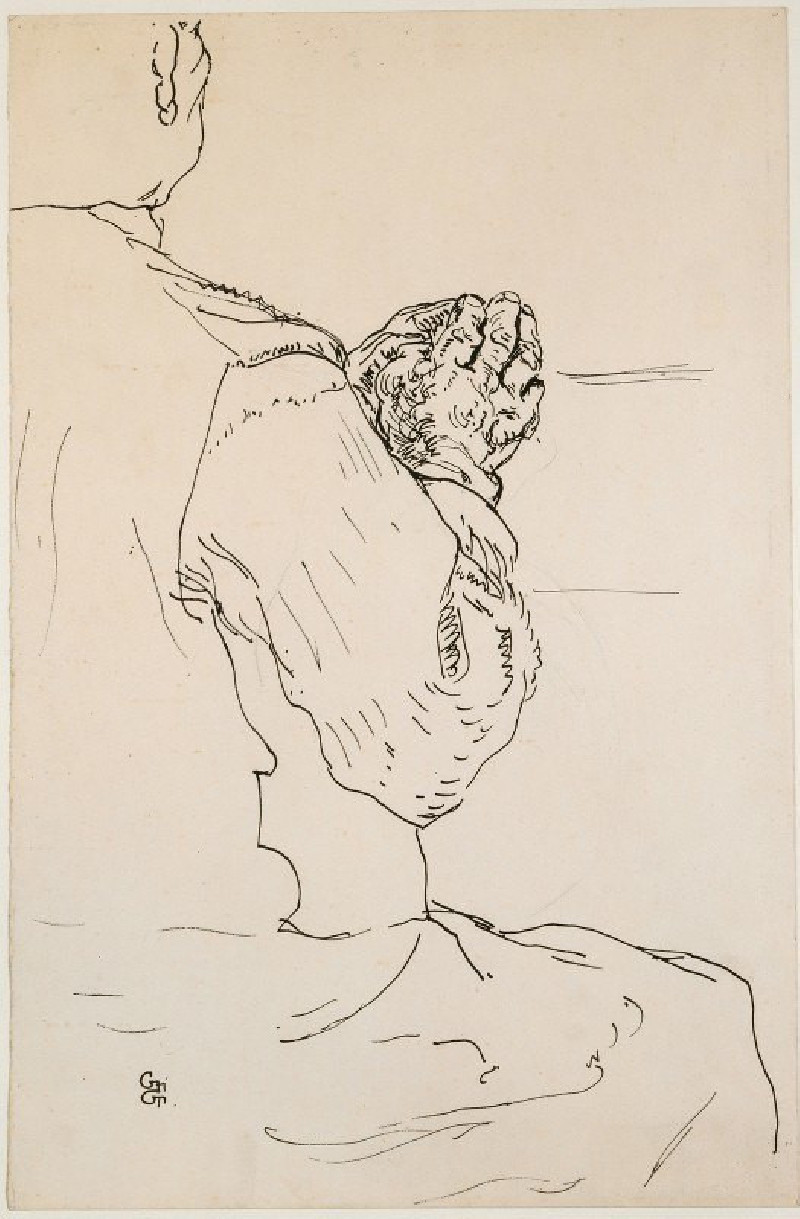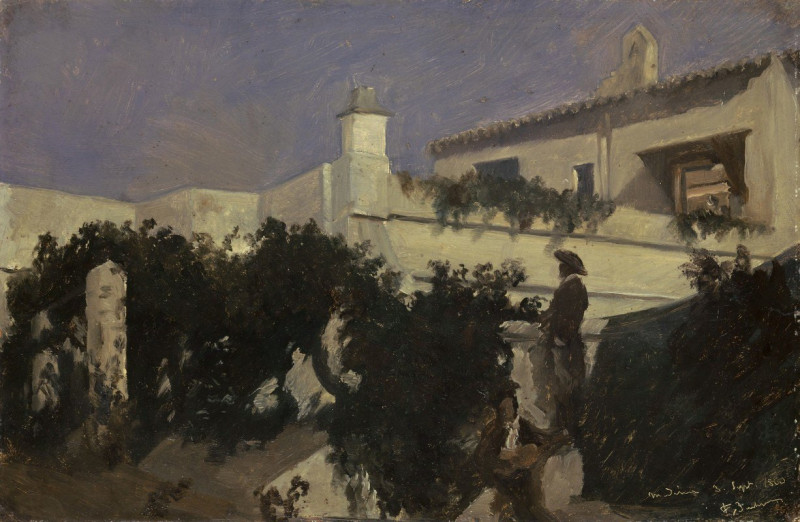Le Moulin (1874)
Technique: Giclée quality print
Recommended by our customers
More about this artwork
Gustave Courbet, a pioneer of the Realist movement, has beautifully captured the essence of rural tranquility in his 1874 painting, "Le Moulin" (The Mill). This masterpiece, infused with a profound sense of naturalism, offers a vivid portrayal of a serene landscape characterized by a rustic water mill, nestled alongside a gently flowing stream.In "Le Moulin," Courbet skillfully uses a palette dominated by deep greens and earthy browns, reflecting the lush vegetation and the rugged architectural features of the countryside mill. The structure itself appears timeworn yet steadfast, with its traditional stone construction and wooden roof, partially hidden amidst a curtain of rich foliage.The focal point of the painting, the mill's large water wheel, is depicted in motion, subtly blending with the reflections in the clear water, suggesting the seamless integration of human activity within nature. The backdrop features a towering cliff, lending a majestic quality to the scene and highlighting nature's imposing scale compared to human endeavours.Through "Le Moulin," Courbet not only showcases his exceptional attention to detail and texture but also conveys a nuanced appreciation of the natural world.
Delivery
Returns
Jean Désiré Gustave Courbet (10 June 1819 – 31 December 1877) was a French painter who led the Realism movement in 19th-century French painting. Committed to painting only what he could see, he rejected academic convention and the Romanticism of the previous generation of visual artists. His independence set an example that was important to later artists, such as the Impressionists and the Cubists. Courbet occupies an important place in 19th-century French painting as an innovator and as an artist willing to make bold social statements through his work.

